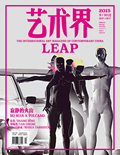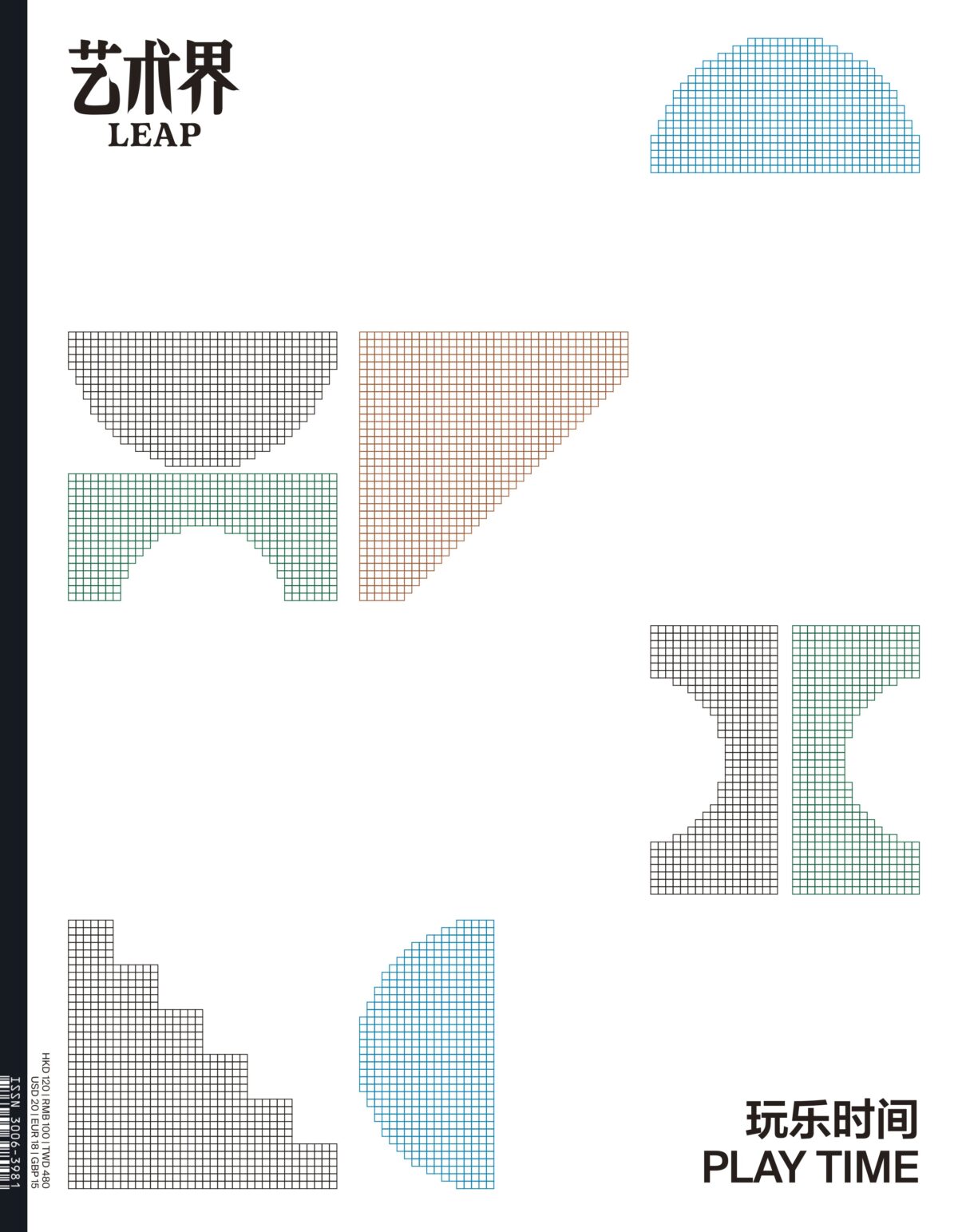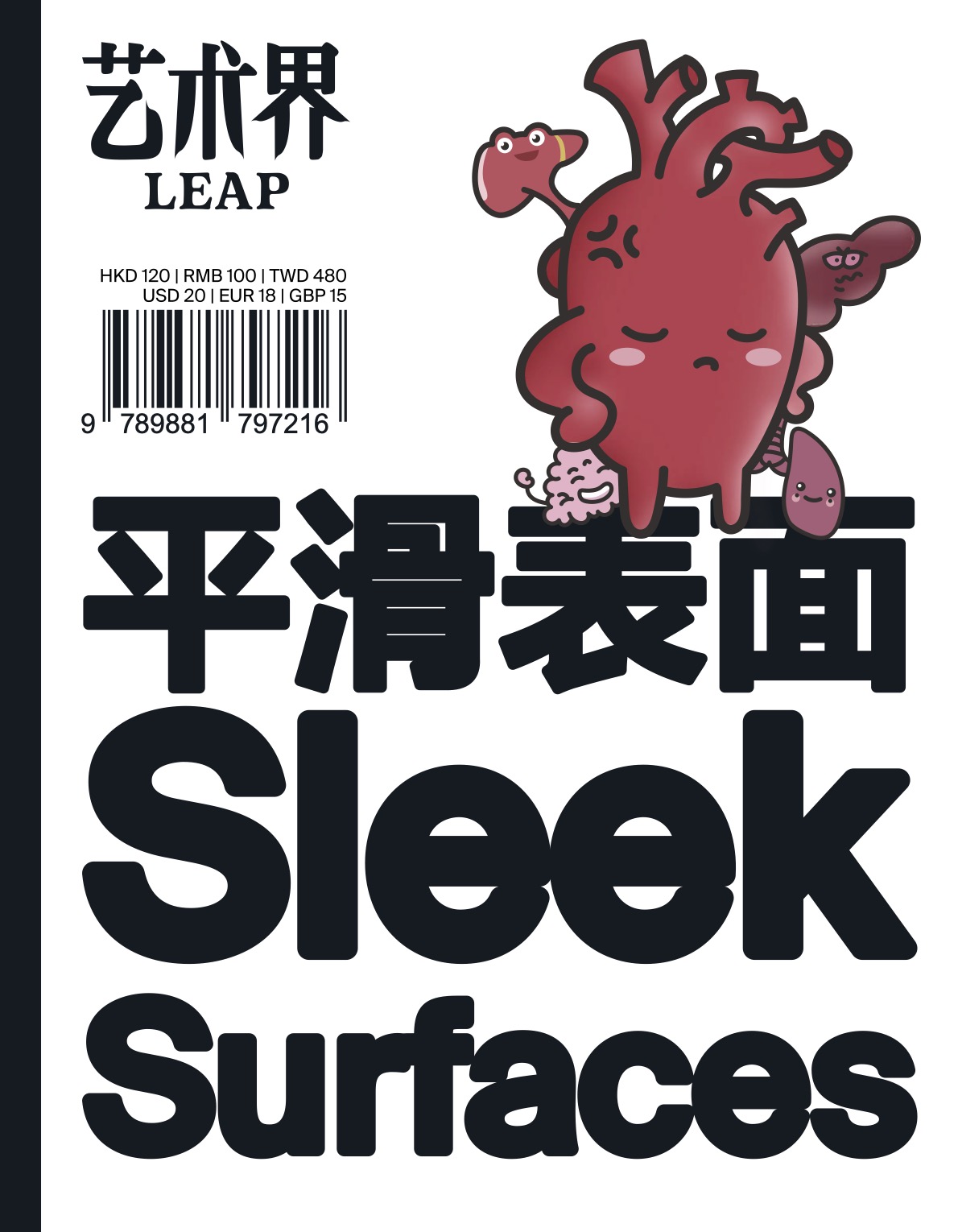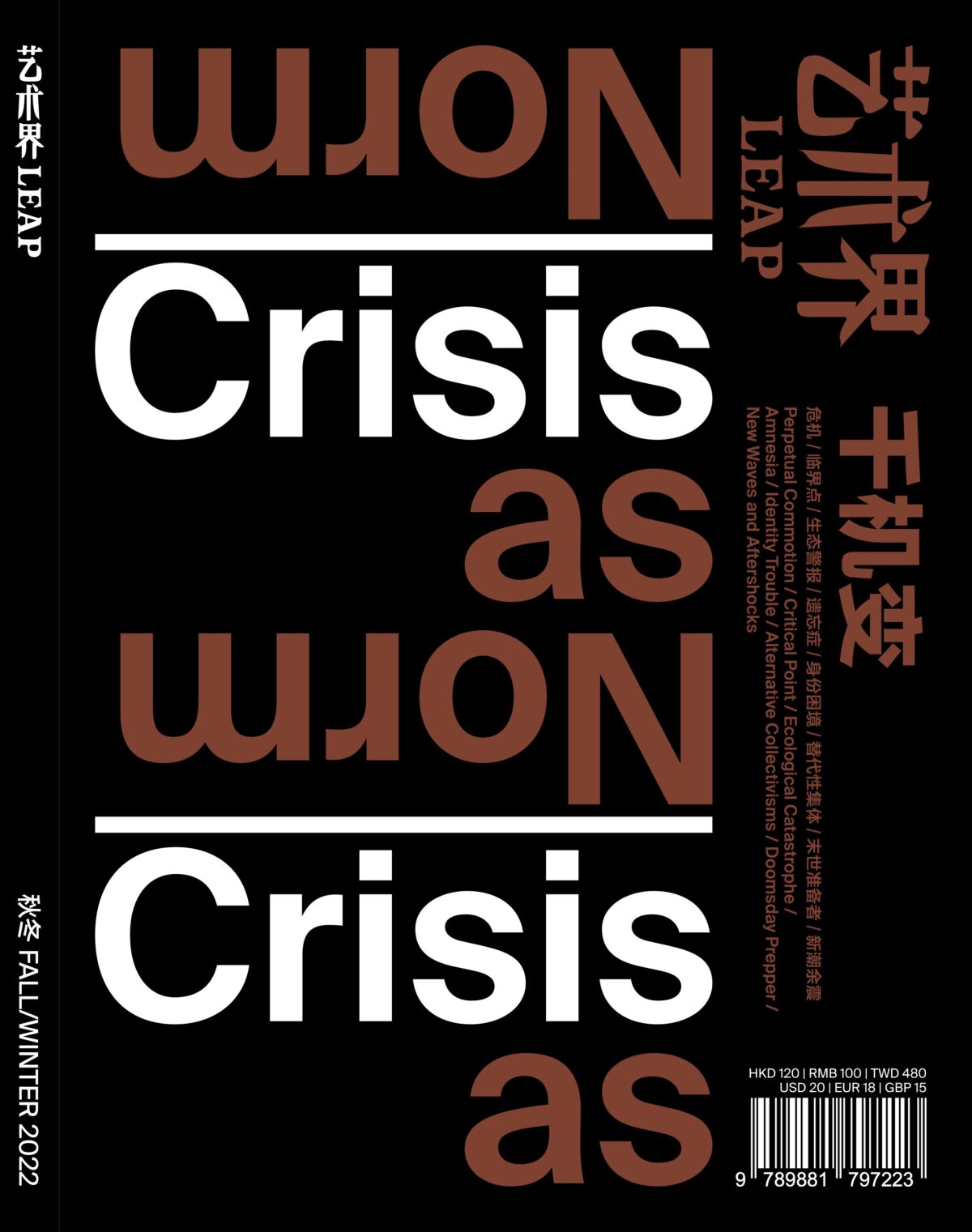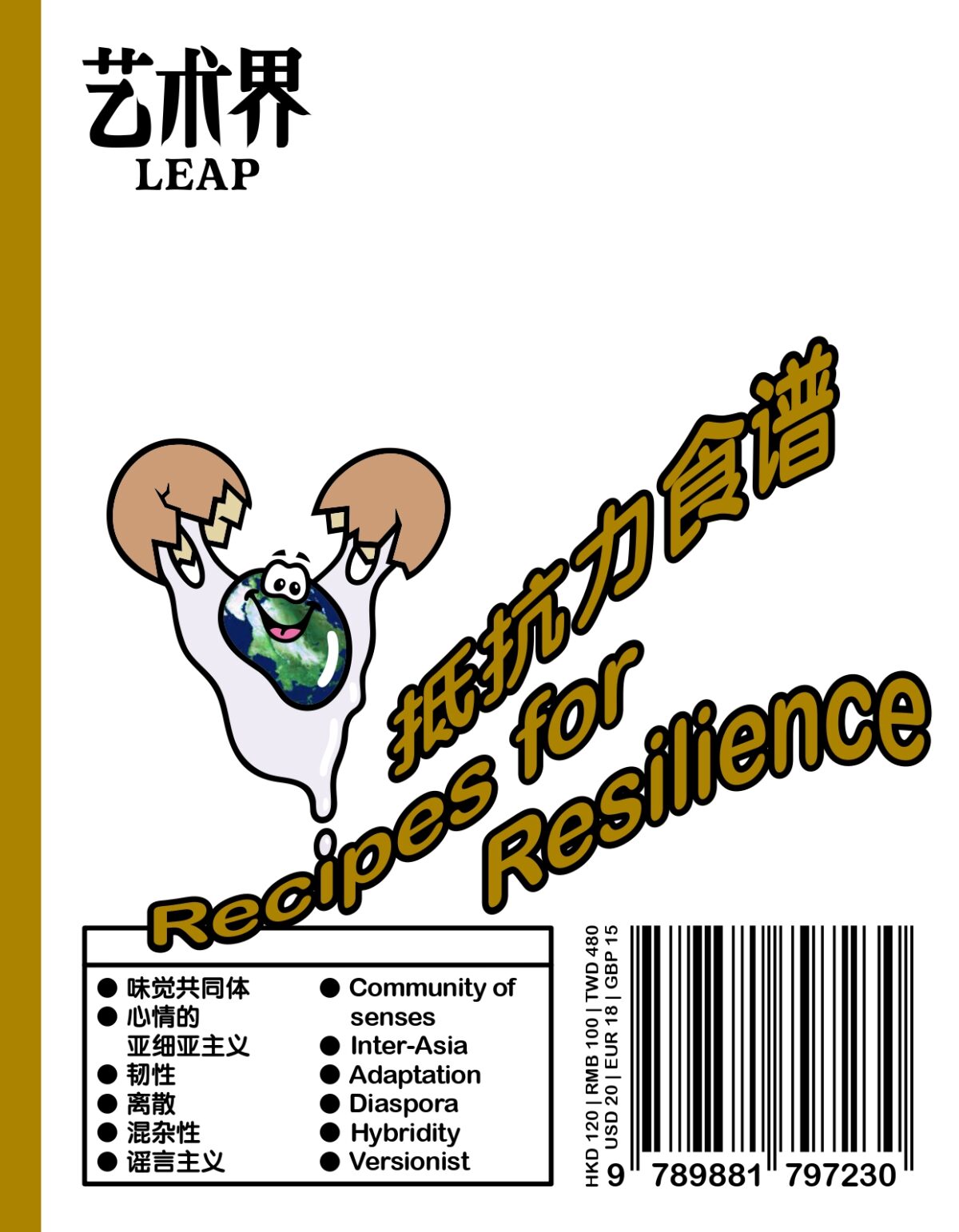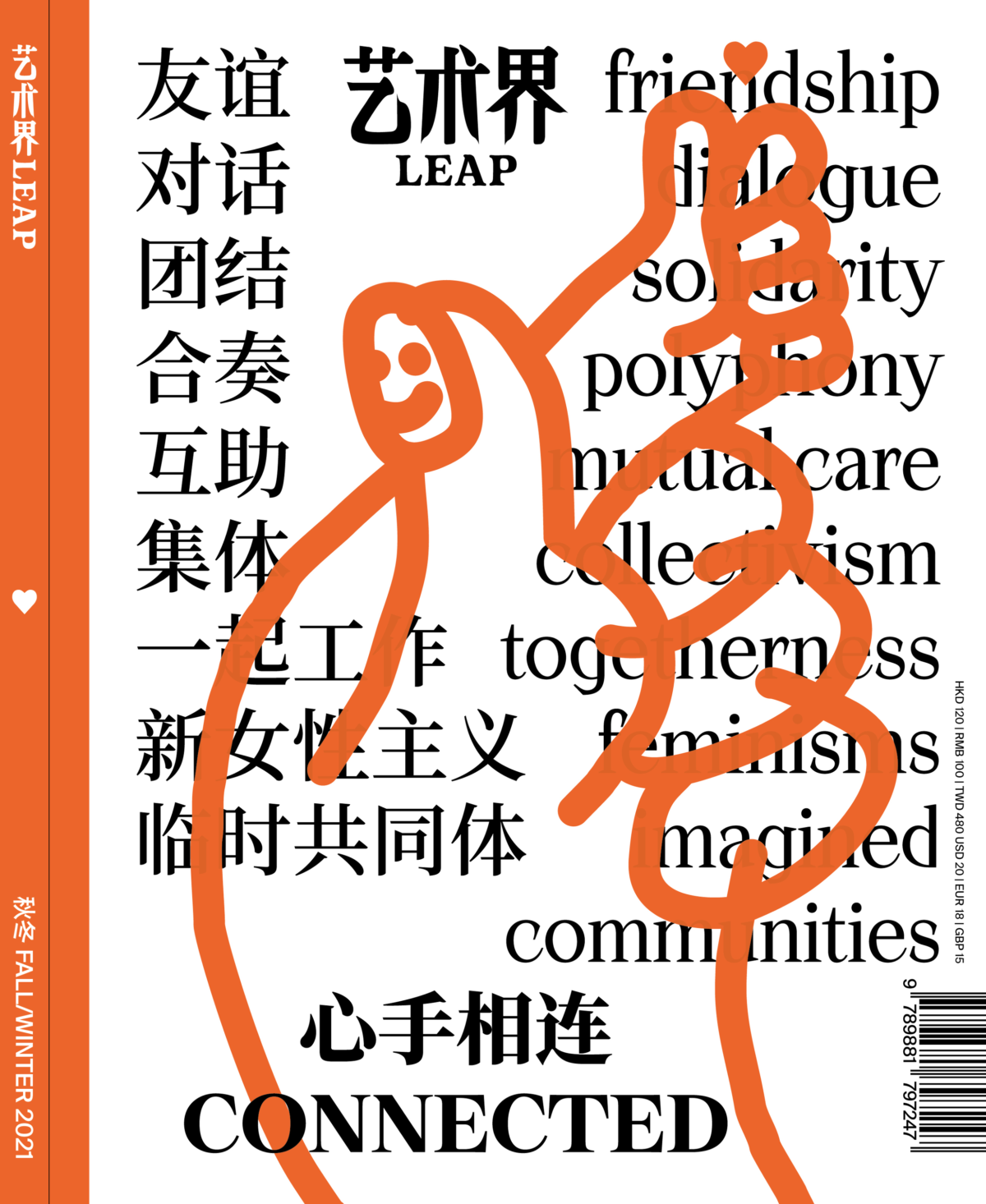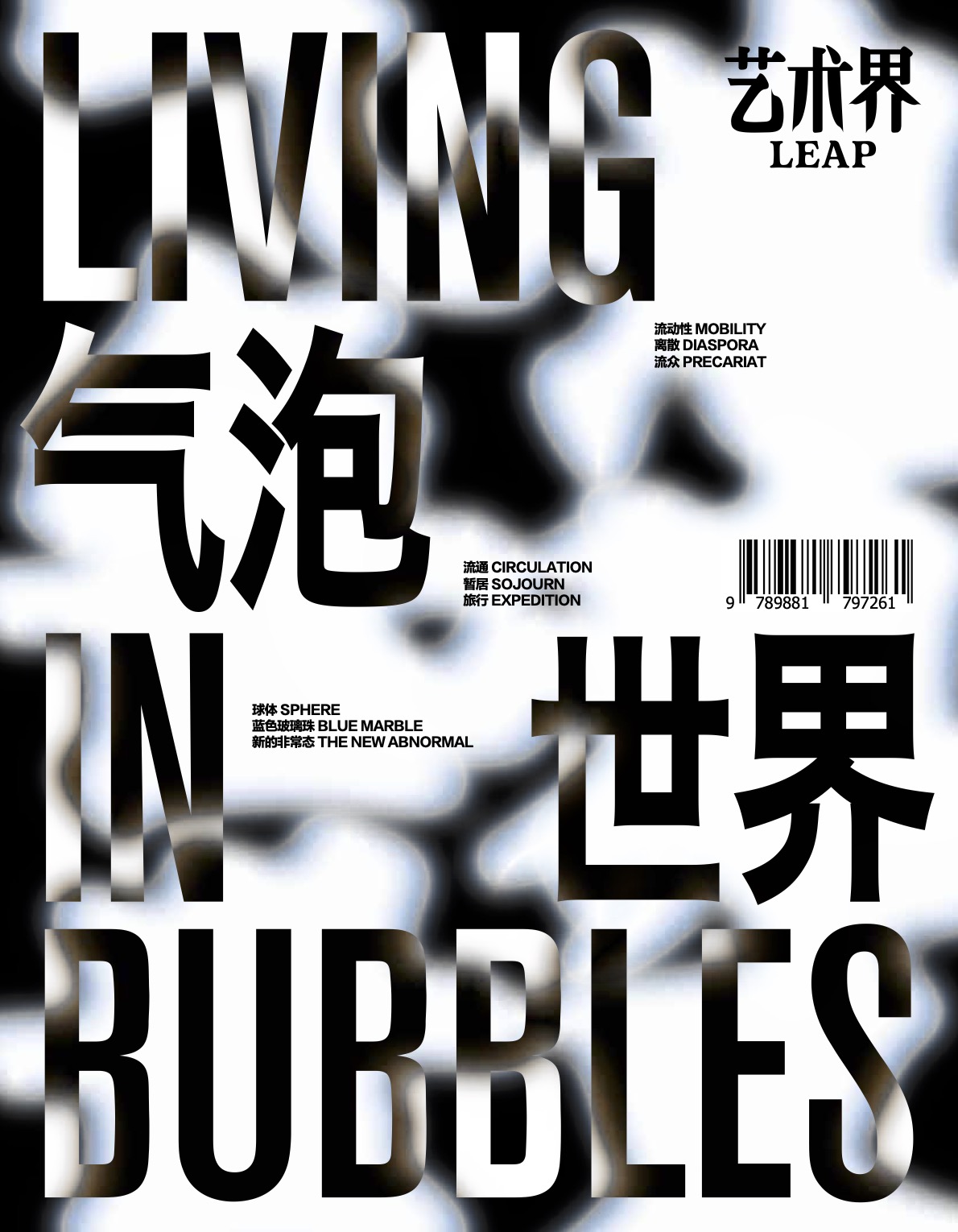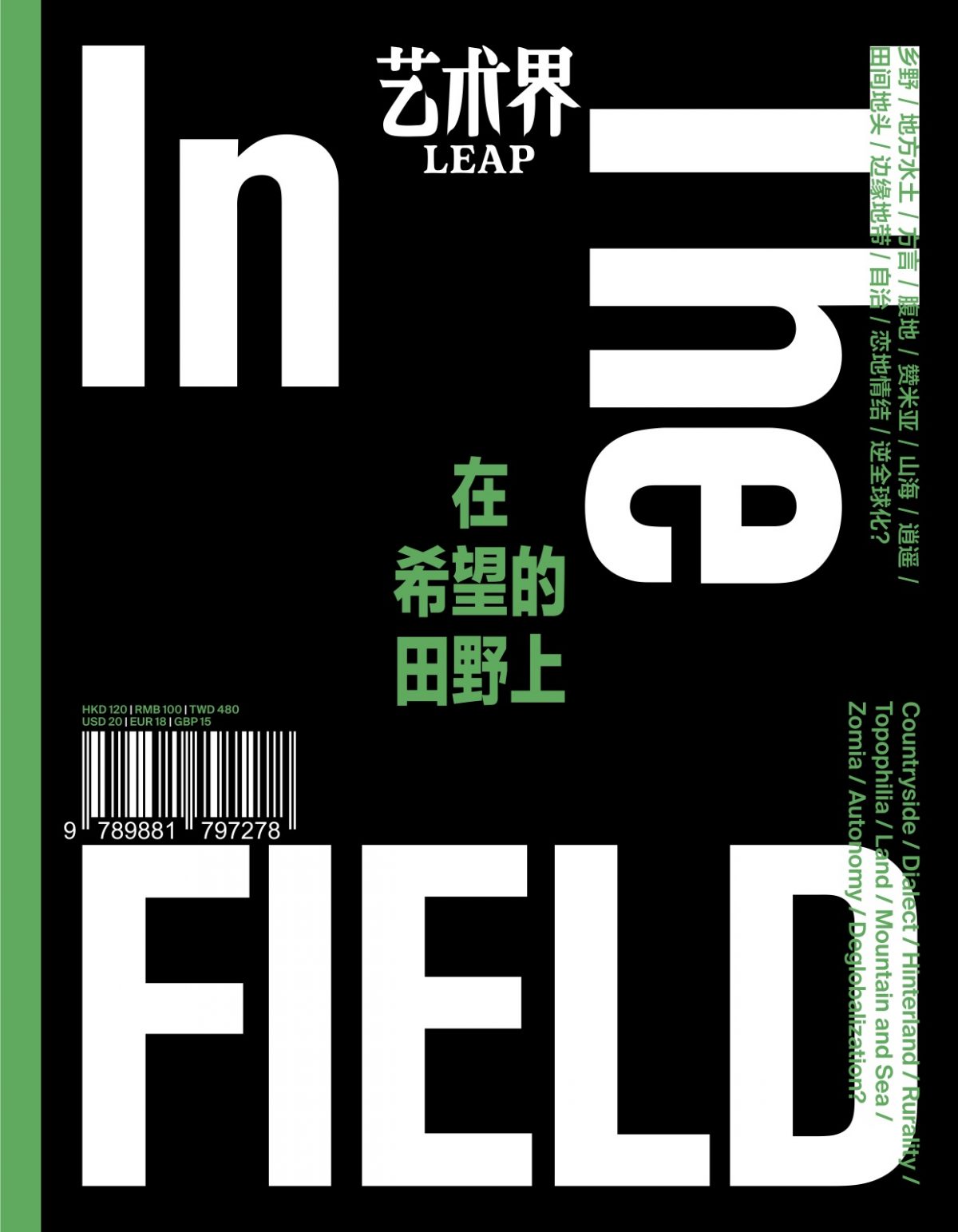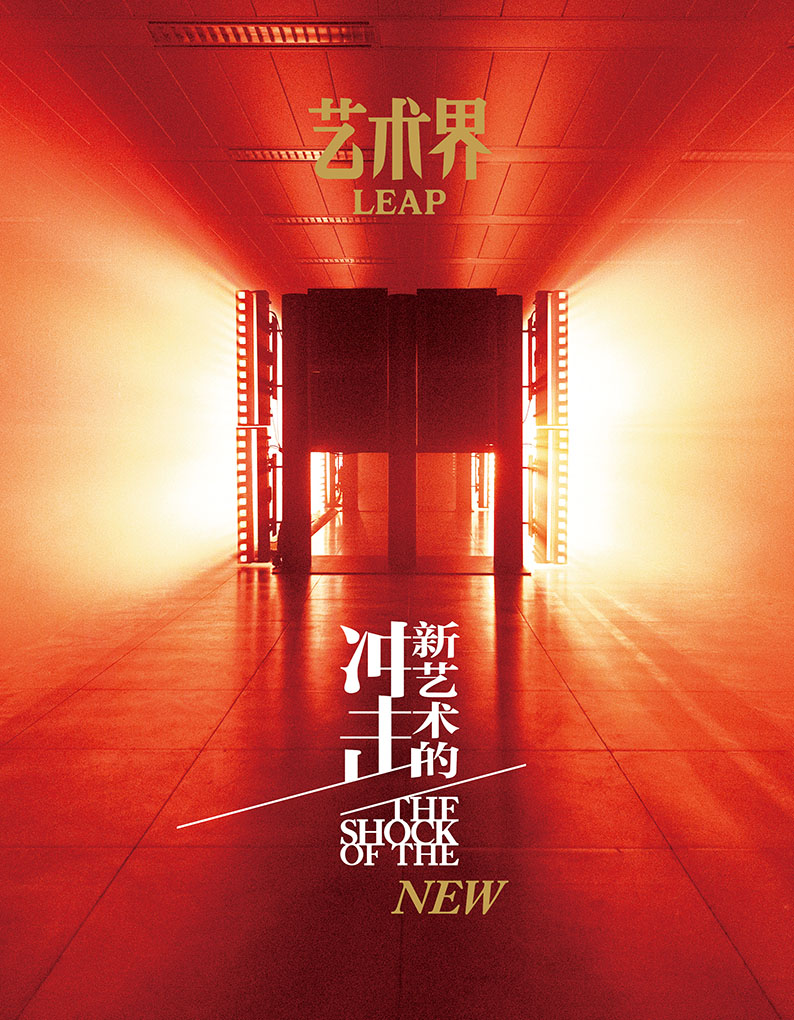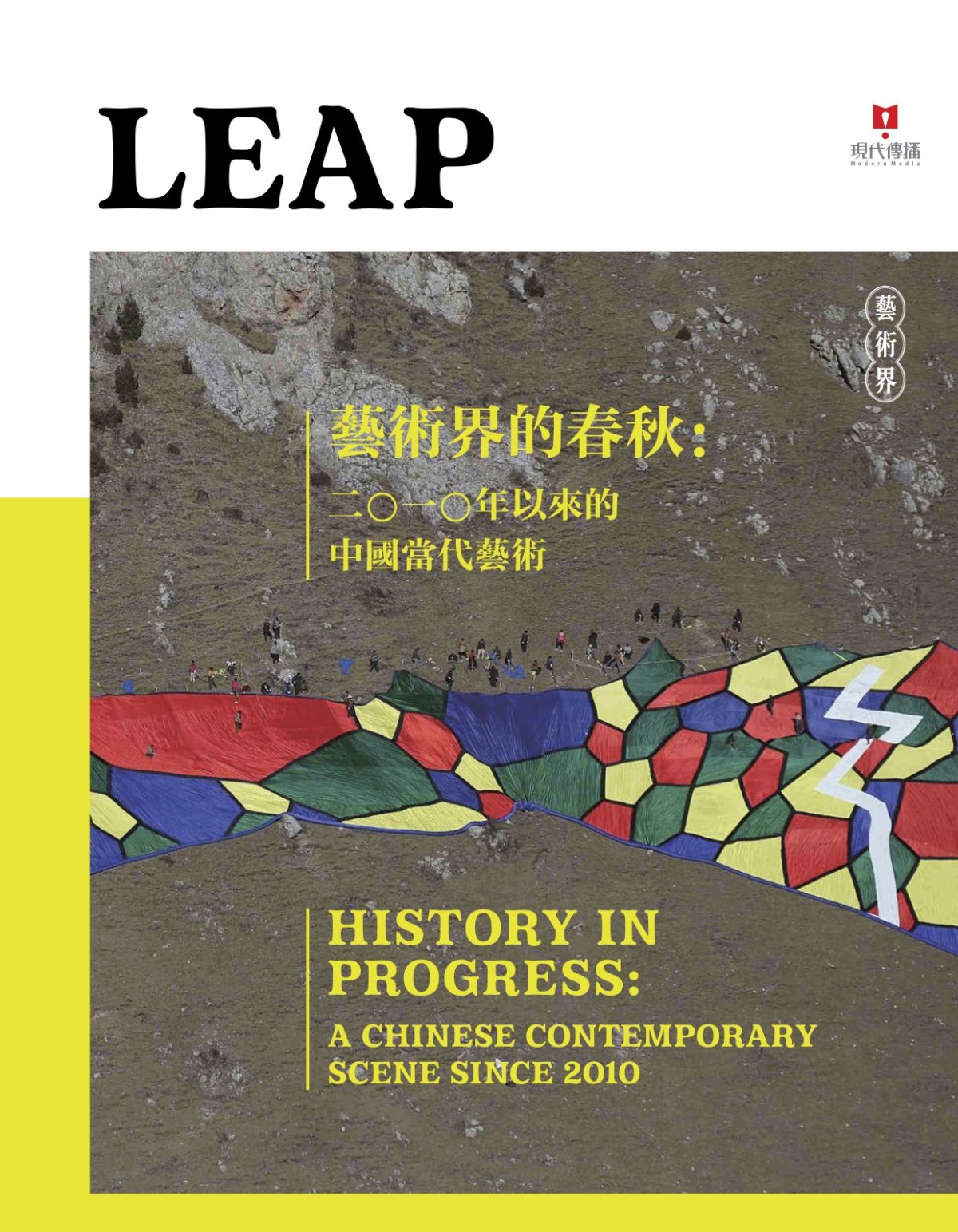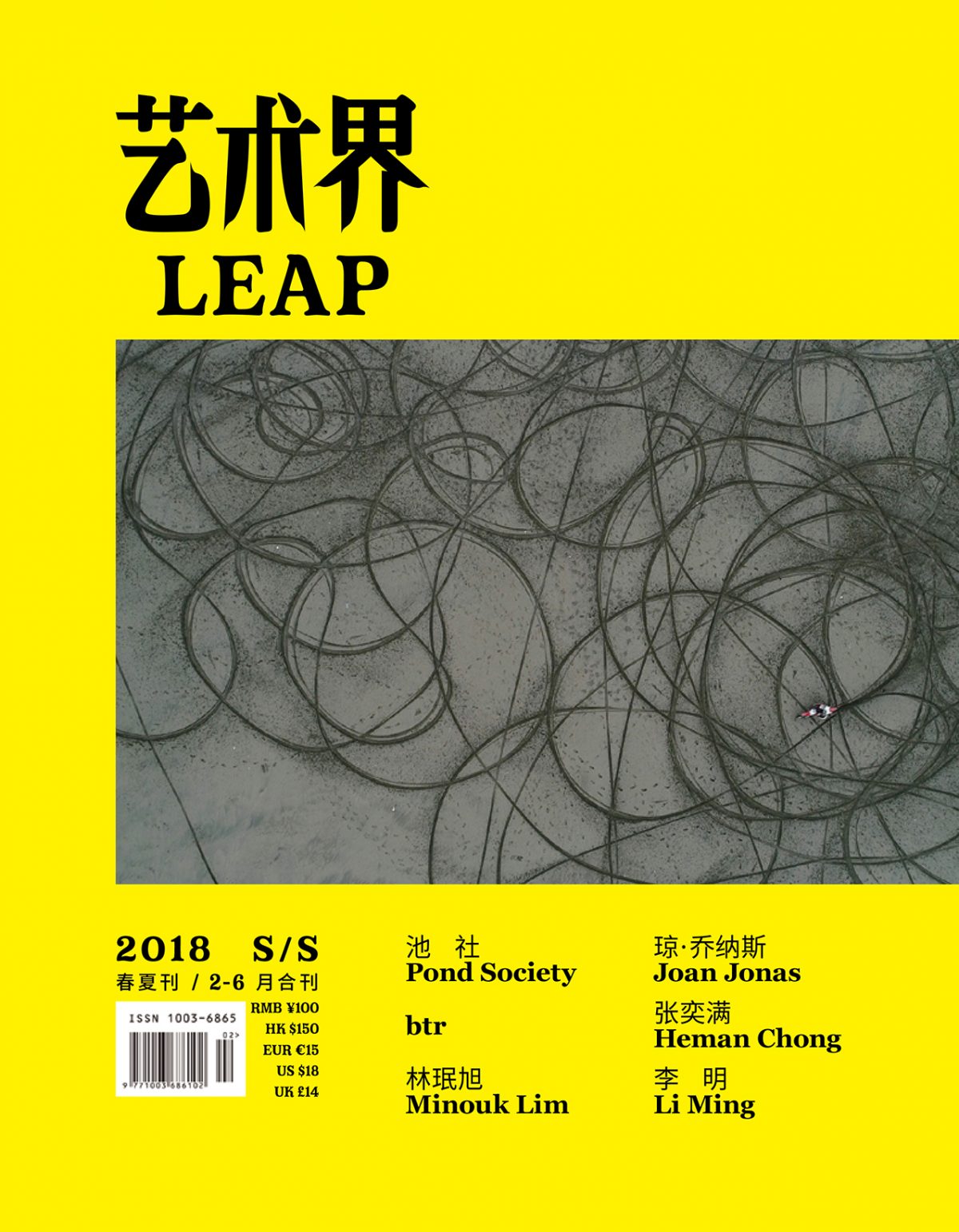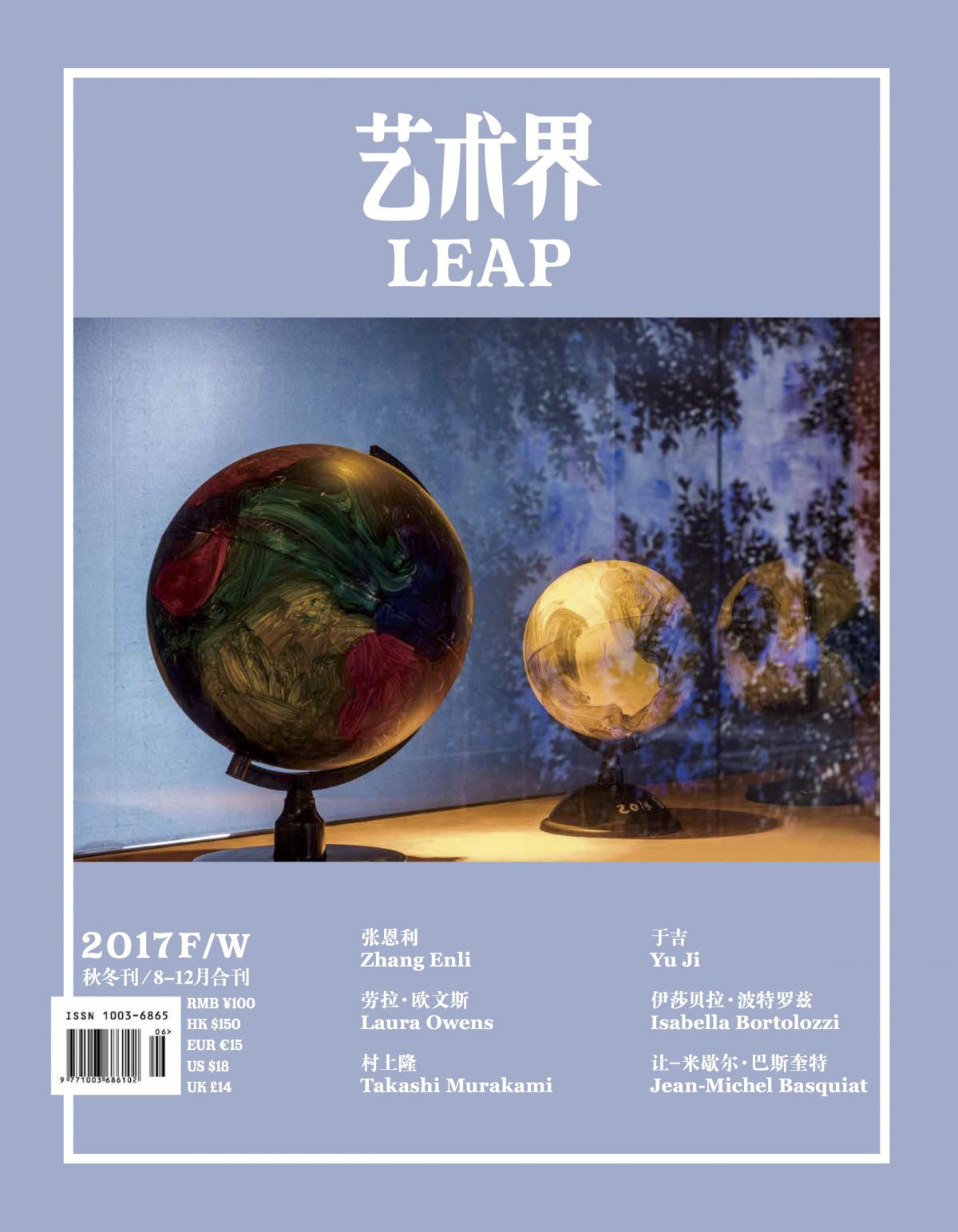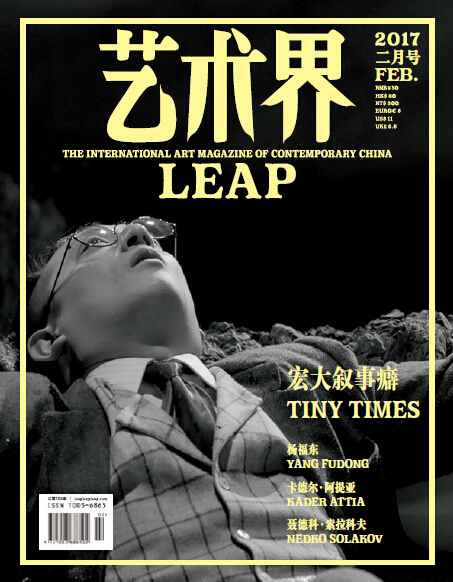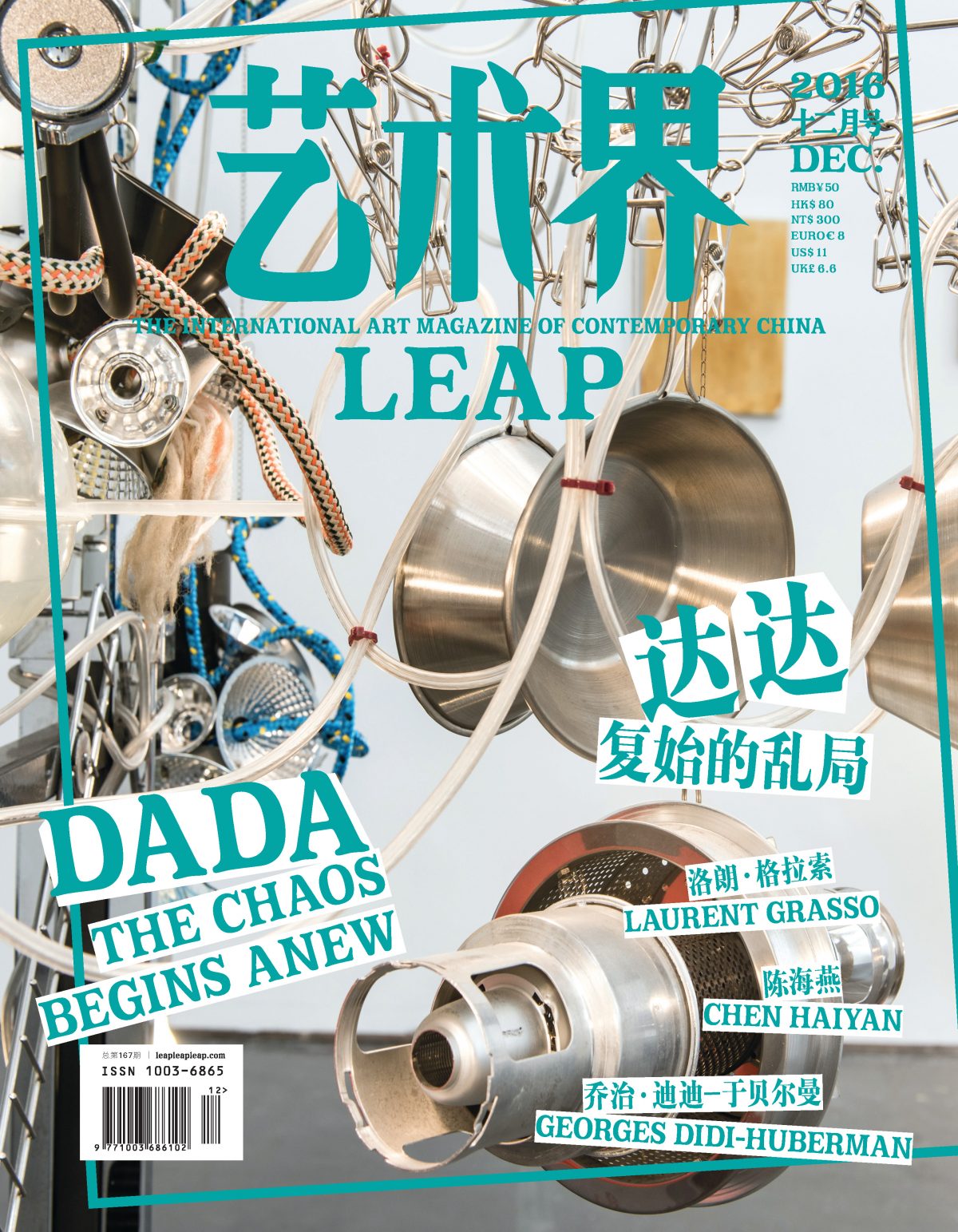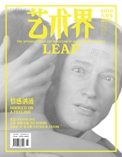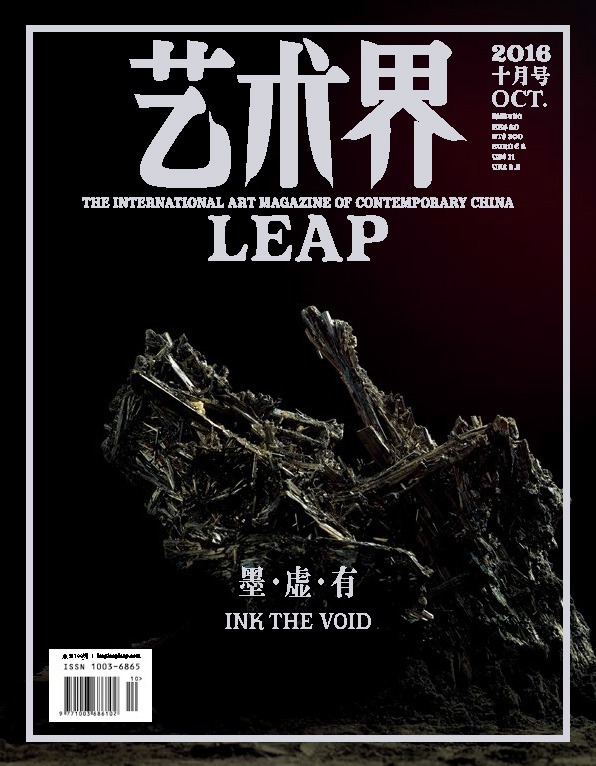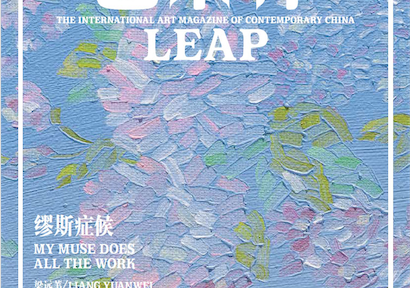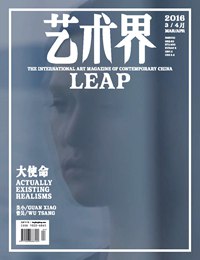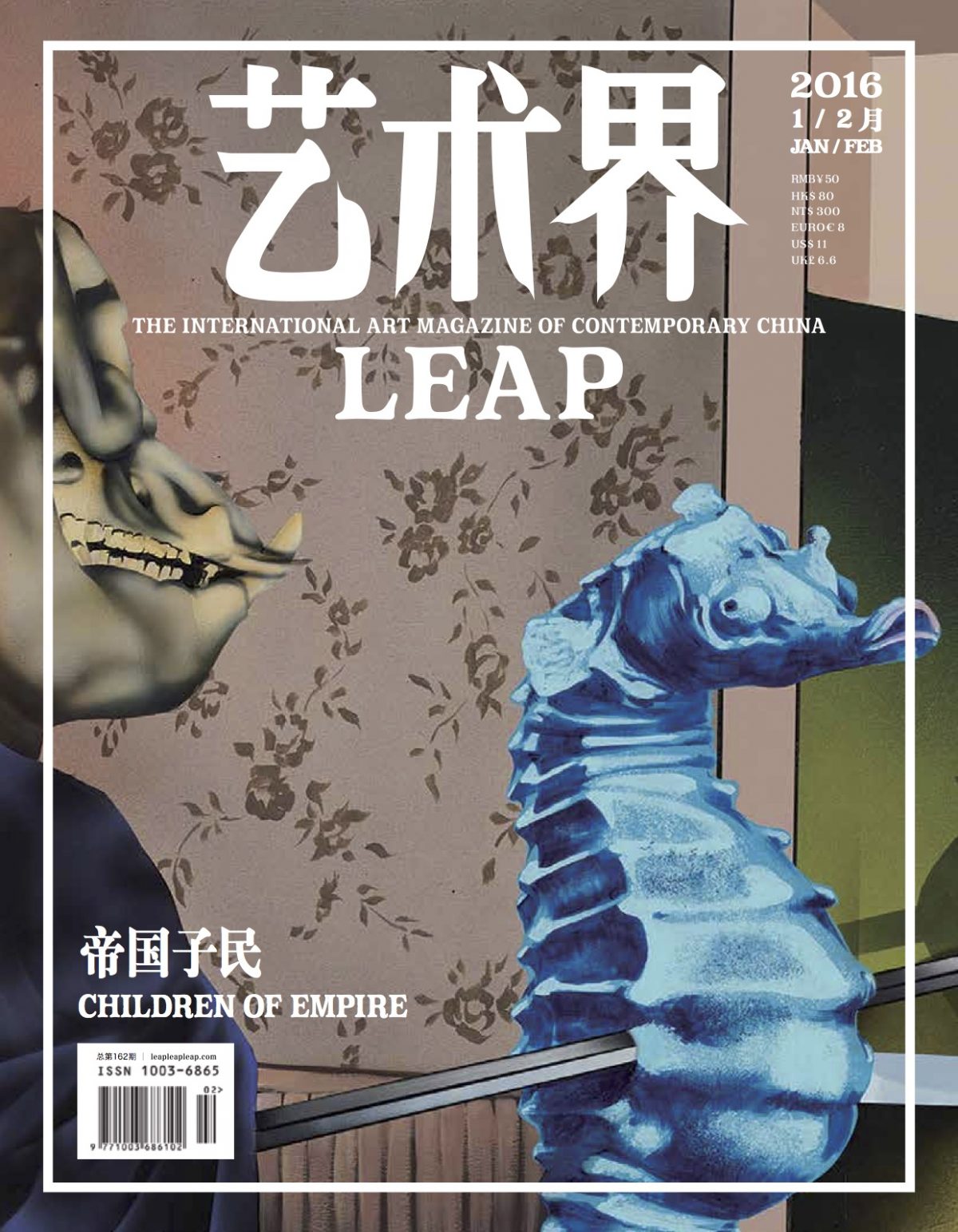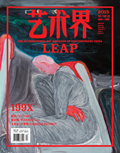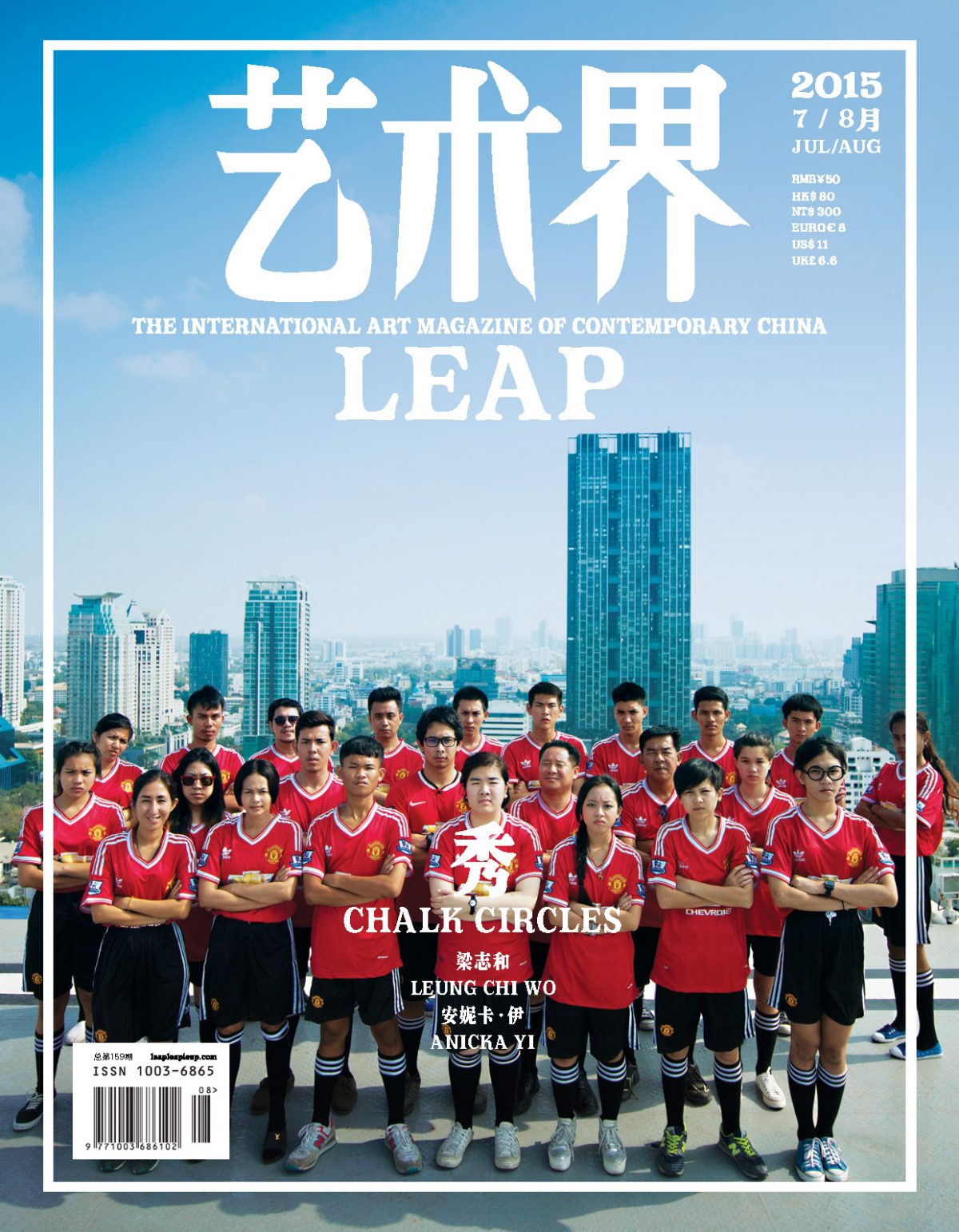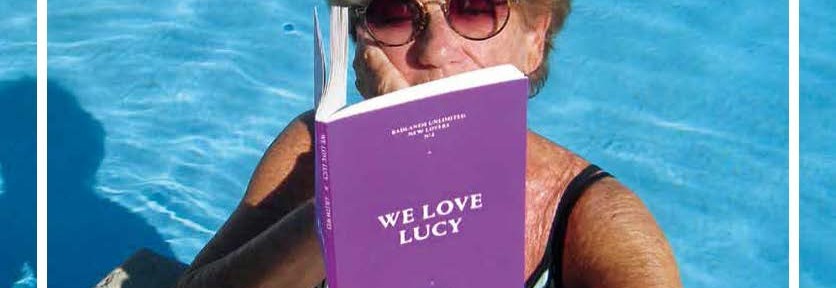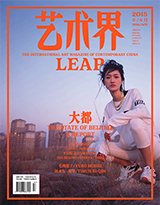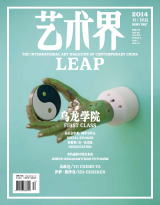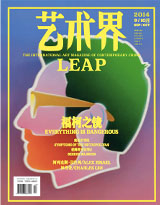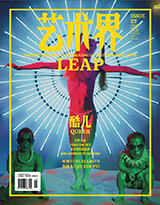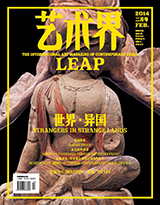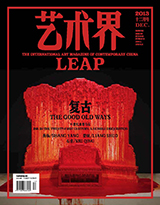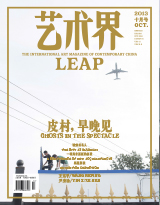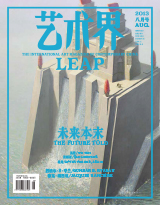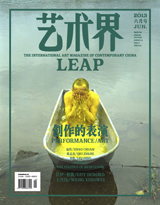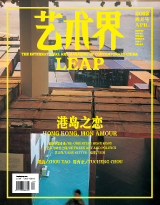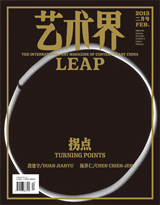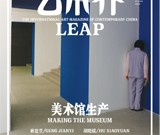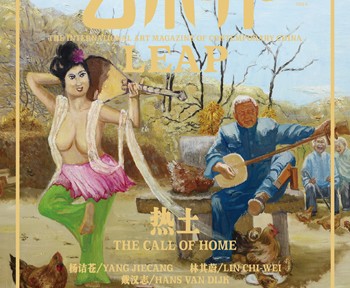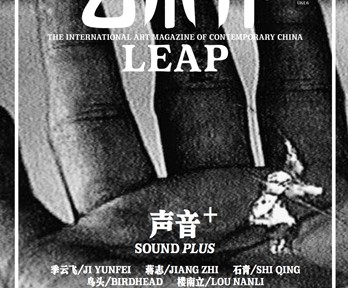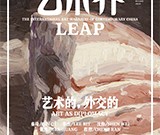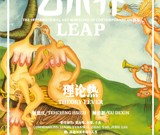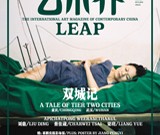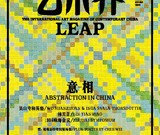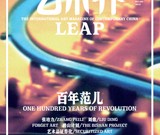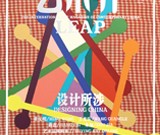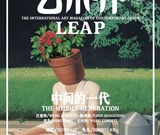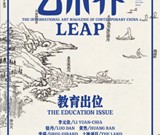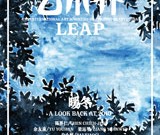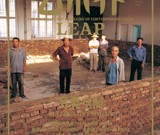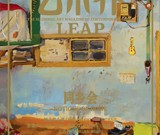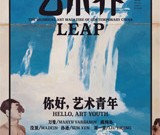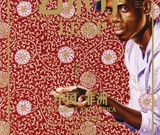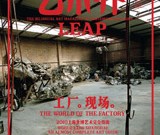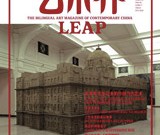This autumn has been one of spectacles. While the Victory Day Parade, countless art fairs and exhibitions compete for attention, new energies are in the air. LEAP is trying something new with this issue; for the first time, we have dedicated our thematic cover feature to the work of a single man—Chen Tong, the storied, idiosyncratic publisher, bookseller, writer, painter, archivist, and all around man of letters. But this is not a tribute. Our reading of Chen is symptomatic, analyzing his person and his career as a node for exchange and cultural production in a variety of directions. If we understand Chen’s compartmentalized roles collectively as a medium, then perhaps reflecting on Chen’s cultural narrative, which sprouts from the individual as nucleus and hub, can help us understand some further ways of working today, including young artists and writers who make extensive use of the medium of the internet.
In the cover package “No Man A Volcano,” we look at members of a younger generation operating through the material entity of the bookstore, integrated into the global independent publishing press of the internet on the model of Chen Tong’s Libreria Borges, albeit with new tools. We also meet translators who rely on social media for the guerilla-style production of knowledge, much like Chen taught himself French in order to produce and manage translations. Beginning with Chen’s approach to gathering knowledge and his Video Bureau archival organization, we speak with those who gather, classify, and exhibit information on individual creative tastes on a daily basis. Finally, inspired by Chen’s productive engagement with the curious economy of Chinese painting as both a lever and fulcrum for his work with contemporary art, we look at the socio-economic structures of the Chinese painting market—from the point of view of interpersonal networks—as an art form itself.
In the upper middle section, LEAP is redoubling its focus on artists, expanding both the breadth and depth of featured artist profiles with pieces on Ian Cheng, Maria Taniguchi, and Zhang Ding. Zhang Ding’s work conveys objects and phenomena that are impossible to describe through language alone. Substances overcome their physical properties, removing the visual protective screens of their appearance and bestowing upon them a new identity and meaning, mulling over the immortality of their significance. Ian Cheng notes that his digital simulations are not video works: they are worlds designed to mutate and change over time like our own. While Taniguchi’s work can feel intimidating and impossible to decode, in an attention economy dominated by production and consumption at lightning speed, her work intervenes with different temporal registers. These three young artists triangulate our idea of what is happening through new art today, birthing fresh visions of the Asian city and its virtual spaces that cross cultures even as they respond to embedded questions and exigencies.
Our top section features Mingyuan Contemporary Art Museum’s exhibition “30 Years of Experimental Theater,” art collective Aspartime’s visual response to the Victory Day Parade, a travelogue from Keith J. Varadi’s Las Vegas trip, a profile on the short-lived Black Mountain College via the lens of the recent retrospective exhibition “Black Mountain College: An Interdisciplinary Experiment,1933-1957,” artist Lu Yang’s latest project Delusional Mandala, and Li Weiyi’s “Input Project.”
This issue’s bottom section also inaugurates a new, long-format review column engaging with popular culture andits critical relationship with global contemporary art in Asia: here we watch and watch over again Hou Hsiao-hsien’s new film The Assassin. In “Hangings,” you’ll find 28 short reviews on exhibitions around the world, ranging from the 13th Biennale de Lyon: “La vie moderne,” the 14th Istanbul Biennial: “Saltwater,” “Art in Eastern Europe and Latin America, 1960-1980” at MoMA, to Yang Fudong at Yuz Museum.
TOP
034 IN A BOX: THIRTY YEARS OF EXPERIMENTAL THEATER
Text:Song Yi
Reviewing the hundreds of live performances over the past 30 years—including opera, dance, and contemporary art—we can only experience them again through methods that reflect their live nature to greater or lesser degrees. Mingyuan Contemporary Art Museum’s exhibition “30 Years of Experimental Theater” presents work entirely in video format, a good body of documentation for related research but an unmitigated disaster for museum viewers not already familiar with the performances.
038 SIDE-SCROLLER: A RESPONSE TO THE PARADE
Text:Aspartime
042 BLACK MOUNTAIN COLLEGE: REHEARSING THE ACHIEVE
Text:Jiang Liyan
Under a large emblem of Black Mountain College we read the list of well-known names who lectured there: Josef and Anni Albers, Robert Rauschenberg, John Cage, Willem de Kooning, Merce Cunningham, Albert Einstein. A schedule of performance is listed on a board around the corner, as if the legendary school still existed.
046 LU YANG: DELUSIONAL MANDALA
054 DISTRIBUTING THE SENSIBLE
Text:Ming Lin
058 THE MIRAGE
Text:Keith J. Varadi
068 LI WEIYI: INPUT PROJECT
074 LEAP PAVILION: THE COMING IMAGE
078 CROSSOVER
MIDDLE
082 ECHOES AND SYSTEM FAILURE: ZHANG DING
Text:Yan Jun
088 ZHANG DING: SELECTED PROJECTS
Text:Xiao Ya
Zhang Ding’s work conveys objects and phenomena that are impossible to describe through language alone. Perhaps the essence of these things is too primal, to the extent that language—artificial and pretentious—cannot touch them. Perhaps the system of these things is too complex, and language cannot communicate their complexity.
094 IAN CHENG: ENTROPY WRANGLER
Text:Stephanie Bailey
As Cheng notes, it is important to remember that his simulations are not video works: they are worlds designed to mutate and change over time like our own. This is why his Dusseldorf show included a series of vacuum bags, one of which was hanging on a wall, filled with baby oil in which a working mobile phone connected to a charger was suspended.
104 IT IS DIFFICULT TO TALK ABOUT MARIA’S WORK
Text:Chantal Wong
It is difficult to talk about Maria Taniguchi’s work. Like an archaeologist piecing together artifacts, she unpacks knowledge and experience connecting material culture, technology and natural evolution. Beyond her objects, we are asked to look at their context. Who sees an object? How are we seeing this object? What associations can we make?
COVER FEATURE: NO MAN A VOLCANO
118 AN IMAGINED MAN: CHEN TONG
Text:Zhao Song
I have known Chen Tong for 20 years, and yet most of the time he is more like an imaginary figure to me. Our limited encounters each year do not pull me out of the joys of this feeling, into reality, but rather serve to further intensify the magic.
128 GUERRILLA INTELLECTUALS
Text:Lai Fei
In today’s art world, the production and dissemination of discourse benefits from the low barriers to entry, zero cost, and ease of use of the grassroots media format of the WeChat subscription account. WeChat has already become an ideal position from which grassroots intellectuals can wage guerilla warfare.
130 CHEN TONG: THE ANTI-REALIST TIME-LANDSCAPE
Text:Xu Tan
Chen Tong’s practice is anti-realist in attitude. He believes that an artist should separate the making of art from considerations of personal livelihood. Under conditions of separation, the artist can then work on the basis of detachment from reality, even if he chooses to adopt representational or other apparently realist means of expression.
138 AUTOGRAPHICAL AFFAIRS
Text:Wu Jianru
Traditional Chinese painting, known colloquially as a “tasteful debt,” has become an increasingly important part of the economy of gifting. In the study of both art history and political history, Chinese painting is a highly fertile medium.
142 ARTISTS’ ARCHIVES
Text:Zhao Mengsha
148 THE BOOKSTORE AS A MEDIUM
Text:Song Yi
When it comes to disseminating knowledge and introducing specific concepts, today’s brick-and-mortar bookstores are not as flexible or comprehensive as the various methods made available by the internet. But there are certain other things that they can do.
153 WHEN A FORM GOES ROGUE
Text:Arjuna Neuman
BOTTOM
162 Prophets of the Extreme Present The Age of Earthquakes vs. #Hitozine
Text:Samantha Culp
164 Time and Action: The Assassin
Text:Zoe Jiang
Hou’s martial arts film can be seen as the greatest attempt to embed tension between form and content among his works. In some of the most revealing moments of The Assassin, the martial-arts film’s chain of action is suspended, or even captured, by the time-image.
186 Hangings
BEIJING
Wu Junyong Hive Center for Contemporary Art
Yan Xing Galerie Urs Meile
Tao Hui Ullens Center for Contemporary Art
Gao Ludi White Space
SHANGHAI
Li Shan James Cohan Gallery
Zhou Zixi MadeIn Gallery
ZHENG BO Leo Xu Projects
Wang Yuyang Long Museum
Yang Fudong Yuz Museum
← → A+ Contemporary
GUANGZHOU
Stereognosis Zone Redtory Museum of Contemporary Art
HONG KONG
A Luxury We Cannot Afford Para Site
Wong Ping Things that can happen
The Past is Continuing Hong Kong Heritage Museum
TAIPEI
Kwan Sheung Chi Project Fulfill Art Space
Yu-Ping Guo Michael Ku Gallery
SINGAPORE
Dear Painter Sundaram Tagore Gallery
SEOUL
Elmgreen & Dragset Samsung Museum of Art,PLATEAU
New Skin: Modeling and Attaching Ilmin Museum of Art
PARIS
David Douard Galerie Chantal Crousel
LYON
13th Biennale de Lyon:La vie moderne Museum of Contemporary Art, La Sucrière
ISTANBUL
14th Istanbul Biennial:Saltwater Various venues
BERLIN
Urban Planning and Architecture in 1960s Berlin Berlinische Galerie
Welcome to the Jungle Kunst-Werke
BONN
New York Painting Kunstmuseum Bonn
MANCHESTER
Micro Micro Revolution Centre for Chinese Contemporary Art
NEW YORK
Art in Eastern Europe and Latin America, 1960-1980 Museum of Modern Art
MONTREAL
Jon Rafman Musée d’art contemporain














